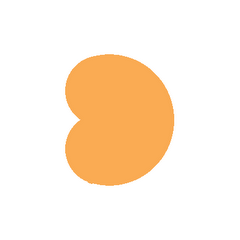 I was invited by Kris Decoodt last week to Microsoft's Digital Inspiration event in Louvain-la-Neuve. Microsoft wanted to brief brand owners, creative and media agencies and programmers on the latest developments at Microsoft. I sat in a session specifically designed for agencies, but was somewhat disappointed. There was some interesting research about the use of online media and its function. On the basis of worldwide research among 400 respondents Microsoft deducted that 19 percent of all time spent with media is spent online. And almost 40 percent of this is used for communication, 18 percent for information, 16 percent for entertainment, surfing, transaction and creation all score less than 10 percent. The flaw on online media is the shared attention: 71 percent of online activities are conducted while people are doing other things. Internet access is interwoven with working, eating, watching TV, listening to music or chatting to friends as the report mentions.
I was invited by Kris Decoodt last week to Microsoft's Digital Inspiration event in Louvain-la-Neuve. Microsoft wanted to brief brand owners, creative and media agencies and programmers on the latest developments at Microsoft. I sat in a session specifically designed for agencies, but was somewhat disappointed. There was some interesting research about the use of online media and its function. On the basis of worldwide research among 400 respondents Microsoft deducted that 19 percent of all time spent with media is spent online. And almost 40 percent of this is used for communication, 18 percent for information, 16 percent for entertainment, surfing, transaction and creation all score less than 10 percent. The flaw on online media is the shared attention: 71 percent of online activities are conducted while people are doing other things. Internet access is interwoven with working, eating, watching TV, listening to music or chatting to friends as the report mentions.
Some interesting examples on online advertising were shown by David Pugh-Jones. A couple of these examples uses the Q-code or UpCode. This code gives access to more detailed information when captured with a mobile phone. A year ago I wrote about this application in Life with Print, and at the DRUPA it will also be featured.
The number one sensation was of course Steve Ballmer, Microsoft's CEO. The Aula Magna of the University was packed with Microsoft believers, what became quickly clear when Steve B. made some jokes. He presented an interesting overview of which business Microsoft is in (its basically a software company, working for desktop and enterprises, is involved in non-PC devices and online advertising). With a goal of being on every desk and in every home. His most important quote was that content and communication media will come together and that we will consume content in a more social context. Video can be watched on different screens, be it a TV, a computer, and iPod or a game console. Barriers between the media will disappear and content will be exchangeable between these media. In this context Steve B., as he refers to himself, also announced that in 25 years time people will not make a distinction between print and TV. I would be interested in Rupert Murdoch's perspective on this.
(Picture:Bert Claeys)
 Students from the University of Linz (Austria) have designed the news knitter, clothing that integrates the news of the day. Via news feed and a data visualisation programme news from all over the world is integrated in the knitting of sweaters.
Students from the University of Linz (Austria) have designed the news knitter, clothing that integrates the news of the day. Via news feed and a data visualisation programme news from all over the world is integrated in the knitting of sweaters.












